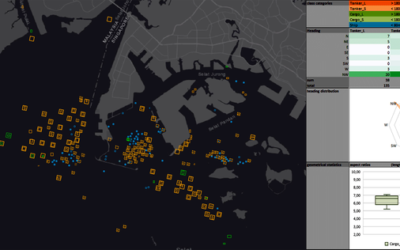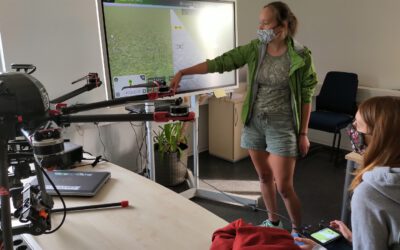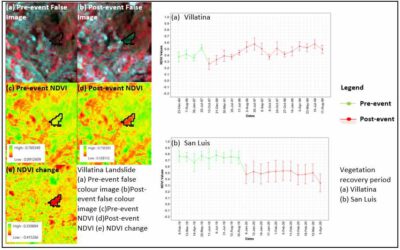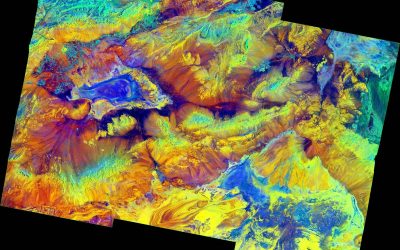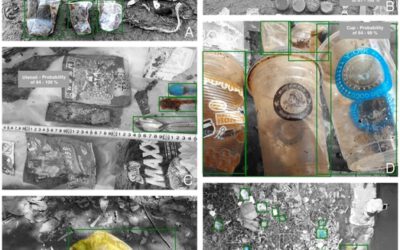Aim
In this module you will gain a detailed understanding of the advantages and challenges of Earth observation using Light Detection and Ranging (LiDAR) systems. Compared to other types of remote sensing data, the data from active Light Detection and Ranging (LiDAR) systems is of particular importance for local studies, where the 3D component (height) of objects is of relevance. Commonly LiDAR data is applied it in the field of digital terrain modelling, in forestry – e.g. for canopy height assessment, or urban structure applications. LiDAR embraces a range of active remote sensing systems mounted on different platforms, which provide valuable information for characterization of horizontal and vertical structure of the earth surface by measuring the travel time of laser pulses in visible and near-infrared spectral domains. The quality of scanning depends on the nature of the LIDAR system (discrete-return or full waveform) as well as on a set of other terrain- and data-driven factors. This course provides you with an overview on the theory and applications of LiDAR data, with a particular focus on airborne laser scanning. Following the initial theoretical sections on the principles and basic characteristics of LiDAR data, diverse practical steps and exercises will be implemented to provide real-world examples to illustrate how the LiDAR point clouds can be applied to extract information on terrain, surface and vegetation. These information will be further employed to model vegetation structural attributes on multiple spatial scales ranging from single trees to landscape levels.
Content
Block 1: Introduction to LiDAR (how does laser scanning work?)
- Reminder on general remote sensing issues: difference between active and passive sensing
- History of LiDAR measurements
- Basics of LiDAR data measurements (platforms, sensors)
- Airborne vs. spaceborne LiDAR: history, applications and data access
- Measurement of travel time of laser light (pulsed time of flight)
- On the concept of “structure”: why a third dimension is crucial?
Block 2: Principles of LiDAR measurements
- Platform navigation, orientation and positioning
- Difference between types of data acquisitions: discrete return and echo waveform
- The recorded parameters: elevation, height, signal intensity and co.
- The concept of „single-pulse“ vs. „multiple-pulse“
- How are the incoming returns recorded? first come- first served!
- Terrestrial LiDAR measurement: one position, rotating scanner
- Data formats and big data-management: each byte matters!
Block 3: Elevation models:
- General thoughts: why are the elevation models essential?
- Digital terrain models
- Digital surface models
- Normalized DSM (Canopy height models)
- Application fields: Forest, landscape and habitat representations
- Magnified focus on Forest (basic and derived parameters): Diameter at breast height, height, tree type proportions, tree type mapping, crown closure, stem count, growing stock und aboveground biomass
- Single tree measurements
- Urban: City models, roof top and building footprints
Block 4: Exercises in Open-Source domain of LiDAR data processing (Fusion/LDV, LASTools, R)
- Exercises on point cloud processing
- Import, export, visualizations and rendering
- Sample measurements, single tree measurements and associated tasks
- Elevation models
- Data trimming, cropping, smoothing and generalizing
- Catalog and descriptive communication
- Extraction of metrics for modeling purposes
- Thoughts on metrics
- Intensity: yes or no?
- Multi-scale metric extraction
- Multi-source metric extraction
- Class works and workshops (CIP-Pool/Homework)
- Literature review, discussion groups and public presentations
Coding
Coding examples and individual work will be covered
Software
Various software programs will be used, but mainly OpenSource software such as R.
Techniques
Different techniques will be introduced and practically applied.
Content
The content of scientific with regard to the audience will be discussed.
General Course News and Updates
MSc defense by Pawel Kluter
Pawel Kluter will present his M.Sc. thesis on Friday 30th of Oct. at 10 am with the title "Deep Learning Approach to Ship Detection and Classification Using Synthetic Aperture Radar Data". From his abstract: "With over 92,000 large commercial vessels at sea,...
Our EAGLE 2020 generation
Our new EAGLE Earth Observation students arrived and we took a group picture while keeping the required distance due to the current situation. Unfortunately not all students could arrive on time for the group picture and hence cannot be seen on the image below. We are...
New EAGLE stickers arrived
Just in time for the welcome of the new EAGLEs we received our new EAGLE stickers. They are a first trial of irregular shaped stickers and more will come. The fit nicely with our "old" PixelschubserIn sticker (pixel pusher) and more formal "Remote Sensing Scientist"....
impressions of our UAV course
In September 2020 our UAV course took place and all practical exercises were covered. The manual UAV control as well as the automatic mission planning settings were discussed and actually applied. Various UAV systems were explored by the students and a diversity of...
M.Sc. presentation by Segun Adewale Ojo
Segun will defend his M.Sc. "Application of Remote Sensing Techniques to detect historical landslides for improving risk assessment in Antioquia, Colombia." on Oct. 16th at 10 am. From the abstract: "In developing countries, current urbanization trends are leading to...
internship, inno lab and MSc idea presentations
On Thursday 24th of September from 10am onwards we will have a range of presentations covering a MSc idea presentation Patrick Sogno on "Earth Observation for Exposome Mapping - Proof of Concept and Case Study in Augsburg, Germany" followed by various internship...
EAGLE student published review article with Prof. Kuenzer
Congratulations to our EAGLE student Patrick Sogno who published together with Prof. Claudia Kuenzer a review article on "Earth Observation Data Supporting Non-Communicable Disease Research: A Review". From the abstract: "A disease is non-communicable when it is not...
M.Sc. defense by Michael Wang
Michael Wang will present his thesis "Comparison of Surface Urban Heat Islands Using the World Settlement Footprint Imperviousness Layer" on Sept. 17th at 10am. From the abstract: "In the growing field of surface urban heat island (SUHI) analysis, impervious surface...
MSc. presentation by Fowad Ahmed
Fowad Ahmed will present his M.Sc. thesis "Agricultural landscape Configuration and Pattern Analysis with VHR Imagery in Bavaria" on Friday 11th at 11am. from the abstract: "Hedgerows and woody linear features are an integral part of the landscapes where they exist....
M.Sc. defense by Nina Gnann
Nina Gnann will present her M.Sc. thesis "Identification of anthropogenic debris assisted by unmanned aerial vehicles and deep learning” on September 8th 12pm. From the abstract: Due to anthropogenic actions, plastic and other debris are distributed in the environment...

